Ḥad Gadya, Gekoyft der tate far tsvey gilden eyn tsigele (Father Bought a Kid for Two Zuzim)
El Lissitzky
1918
Image
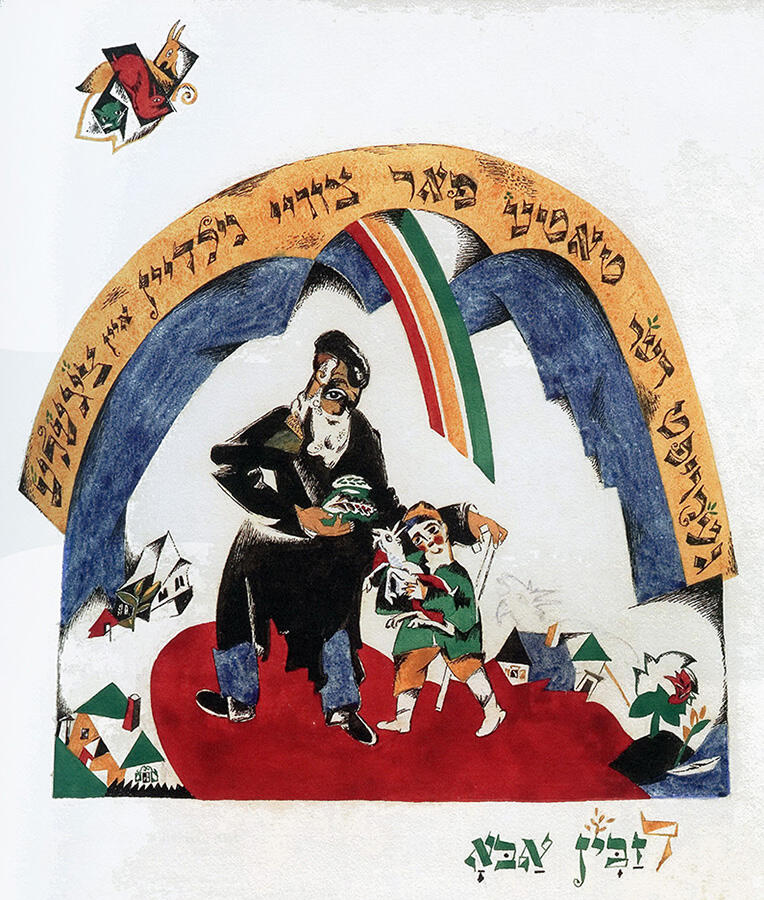
Engage with this Source
Restricted
Image
Places:
Russian Empire (Russia)
Creator Bio
El Lissitzky
1890–1941
El Lissitzky, born Lazar Markovitch Lissitzky in Pochinok, Russia, was perhaps the most brilliant expositor of cubo-futurism and then Soviet constructivism. Between 1915 and 1919, he was an active participant in efforts to develop a new Jewish art in Russia. As a youth, Lissitzky studied drawing with the Russian Jewish painter Yehudah Pen in Vitebsk, pursued architectural engineering in Darmstadt, and traveled extensively in Europe, visiting galleries and sketching buildings and landscapes. During the summers of 1915 and 1916, he participated in the Jewish Historical and Ethnographic Society’s expeditions and was inspired by the extraordinary synagogue frescoes he encountered. Between 1917 and 1919, he drew close to other figures seeking to spark a “Jewish cultural renaissance.” He participated in the first exhibition of Jewish artists in Moscow in 1917, worked with Moyshe Broderzon to create what he called “the new Jewish book,” and supplied illustrations for numerous Yiddish, Hebrew, and Russian Jewish publications, particularly books and journals for children. Beginning in 1919, Lissitzky began to relinquish the idea of creating a Jewish national style and played a central role in developing the nonrepresentational and revolutionary constructivist and suprematist styles. After some years in Berlin, he returned to the Soviet Union. In the 1920s and 1930s, he was an important presence in the world of Soviet art as a painter, graphic designer, architect, pavilion designer, typographer, and photographer.
You may also like
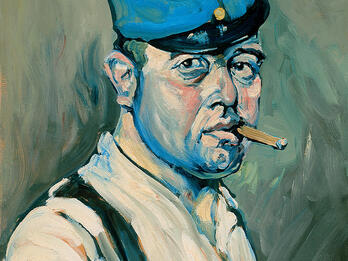
Self-Portrait with Soldier's Hat
Hugo Scheiber painted this rueful self-portrait during World War I. He wears a military cap but otherwise does not appear to be in uniform. Though in 1915 he became a futurist, this painting is more…
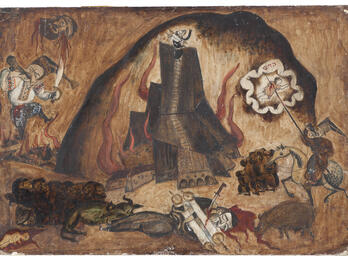
Pogrom
Issachar Ber Ryback painted Pogrom during the Russian Civil War, when waves of pogroms were occurring in Ukraine and other areas in the former Pale of Settlement. In the foreground a slain man…
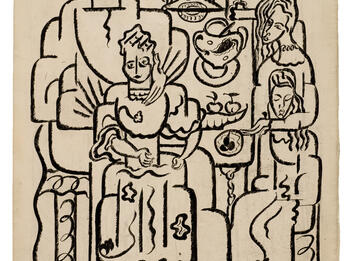
Sleeping Beauty
In Alexander Tyshler’s illustration for a Yiddish version of the Sleeping Beauty story, characters seated around a table are packed together like puzzle pieces, enclosed in a rectangular shape from…
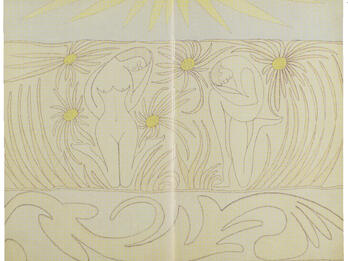
Adam and Eve
David Yakerson’s Adam and Eve dates from a time before his turn to the much more abstract style of suprematism. In this illustration, Adam and Eve blend in with other decorative elements in a…
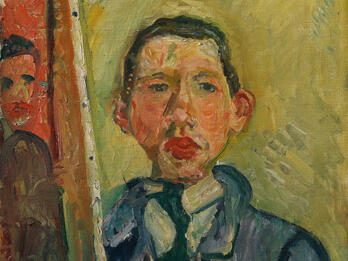
Self-Portrait
Chaim Soutine’s self-portrait is both an homage to art history and a critique of it. There was a long tradition of artists painting themselves facing an easel, holding a palette and paint brushes. But…
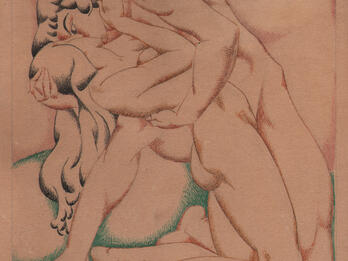
Le Cantique des Cantiques (The Song of Songs)
This erotic illustration by Joseph Chaikov was made for a lavish edition of the biblical Song of Songs published by the Yiddish Kultur-lige in Kiev in 1918–1919. The forms of the embracing couple here…

